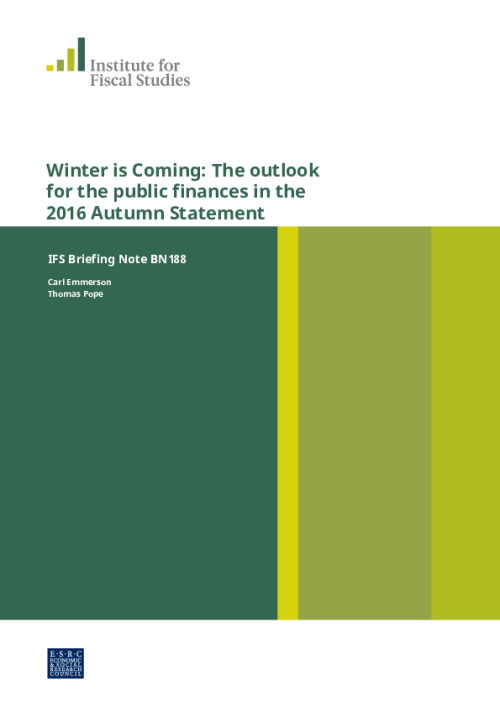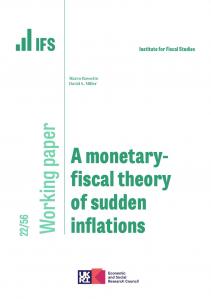As the new Chancellor prepares for his first fiscal statement this briefing note looks at how significant a public finance challenge he faces.
Prior to the referendum the public finance challenge facing the UK already looked far from easy. Two out of the three fiscal targets that the new Conservative Government set itself had already been breached and further net tax rises, benefit cuts and real cuts to spending on public services – which will not be easy to deliver – were planned for the remainder of this parliament in order to try to eliminate a still relatively high budget deficit by 2019–20. And there was a further longer-term public finance challenge caused by the financial costs of an ageing population.
But since then the referendum result has led to the Government abandoning its other fiscal target and virtually all leading economic forecasters – including the Bank of England – substantially revising down their forecasts for economic growth. If correct this worsens the UK’s public finance position. This briefing note attempts to quantify how much greater the public finance challenge might be, taking into account not just the latest macroeconomic forecasts but also the movements in gilt rates, equity markets and oil prices seen since the last Budget and the scope for a cut to public spending as a result of no longer having to make a net financial contribution to the EU budget.
The note is structured as follows. Section 2 sets out the UK government’s public finance plans as of the March 2016 Budget. Section 3 describes how forecasts for growth and inflation from the Bank of England and other leading forecasters have changed since the referendum result, and also highlights the evolution of equity markets, gilt rates and the sterling oil price over the same period as these can all affect revenues and spending. Given these changes, Section 4 takes a plausible outlook for the UK economy and describes how this would change the forecasts for receipts, spending, borrowing and debt through to 2019–20. In Section 5 we discuss considerations for the Chancellor around his choice of fiscal targets and how fiscal policy might need to adjust to the changing public finance outlook both over the next few years and over the longer-term. Section 6 concludes.










